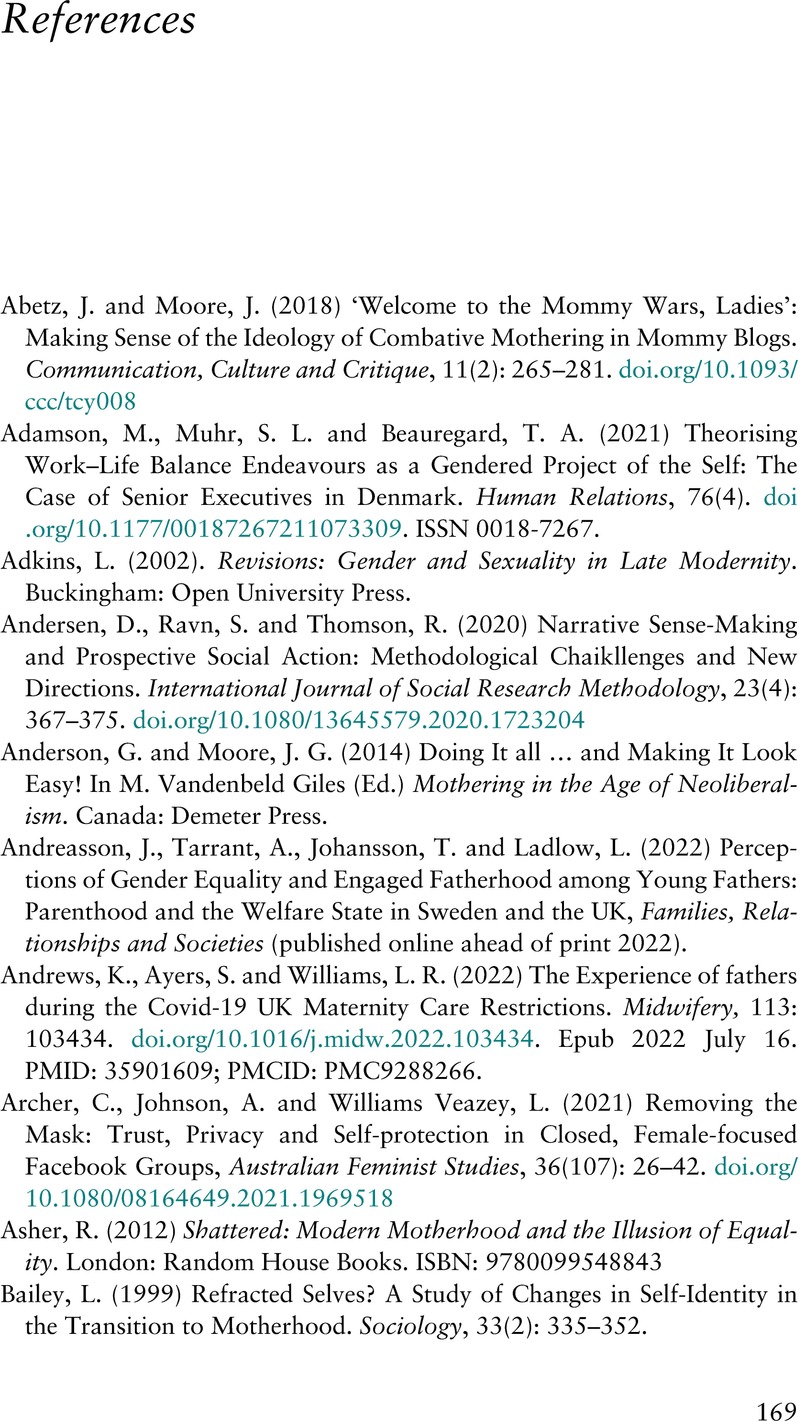Book contents
- Motherhood
- Motherhood
- Copyright page
- Dedication
- Contents
- Acknowledgements
- Introduction
- 1 Becoming a Mother
- 2 Anticipating Motherhood
- 3 Making Sense of Early Mothering Experiences
- 4 A Return to Normal
- 5 Mothering Experiences during the COVID-19 Pandemic
- 6 Conclusions and Reflections
- Appendices
- References
- Index
- References
References
Published online by Cambridge University Press: 17 November 2023
- Motherhood
- Motherhood
- Copyright page
- Dedication
- Contents
- Acknowledgements
- Introduction
- 1 Becoming a Mother
- 2 Anticipating Motherhood
- 3 Making Sense of Early Mothering Experiences
- 4 A Return to Normal
- 5 Mothering Experiences during the COVID-19 Pandemic
- 6 Conclusions and Reflections
- Appendices
- References
- Index
- References
Summary

- Type
- Chapter
- Information
- MotherhoodContemporary Transitions and Generational Change, pp. 169 - 183Publisher: Cambridge University PressPrint publication year: 2023



